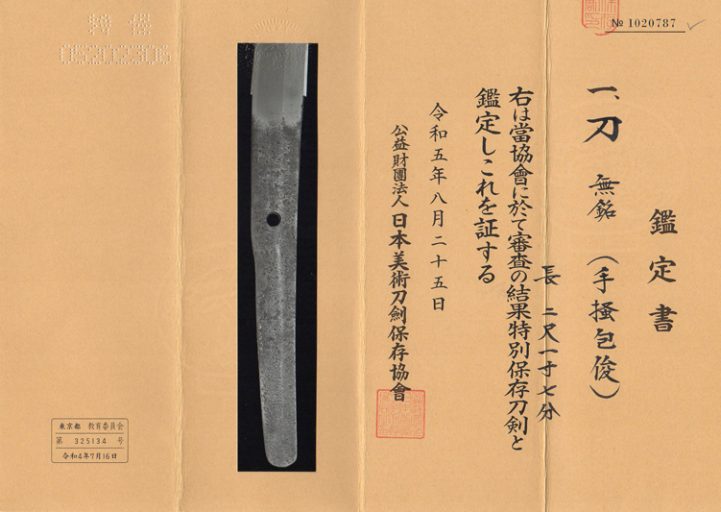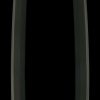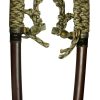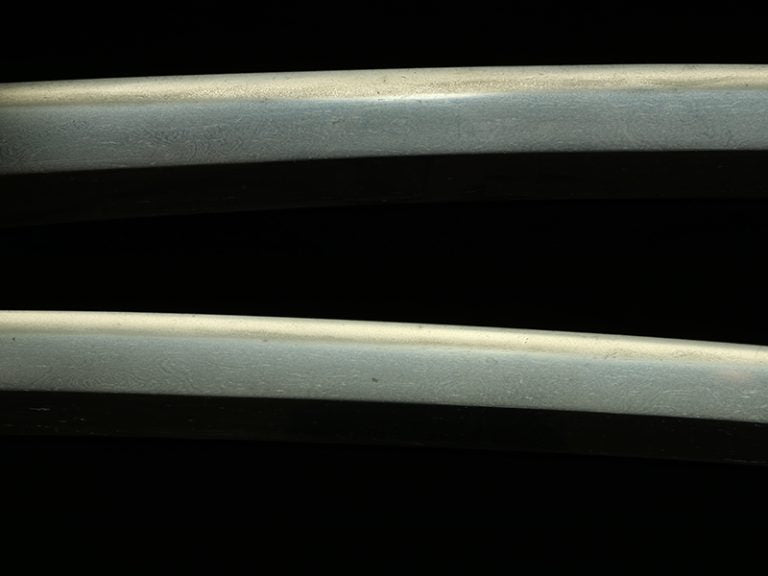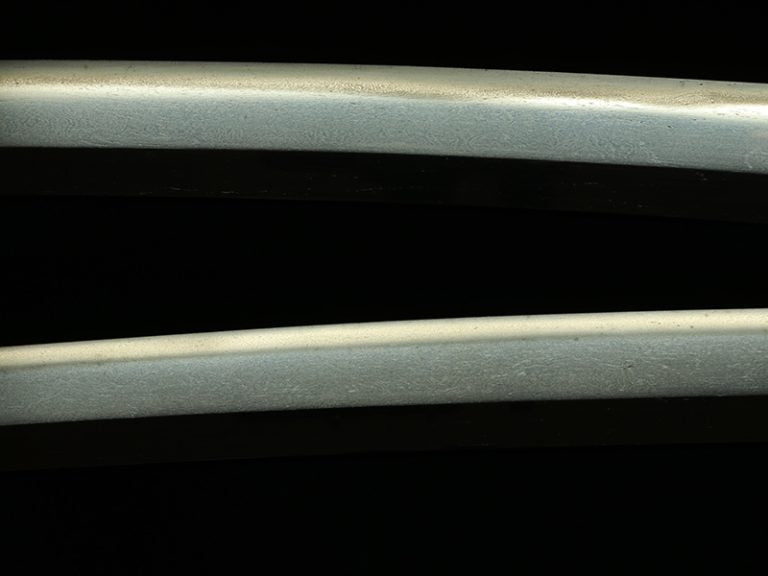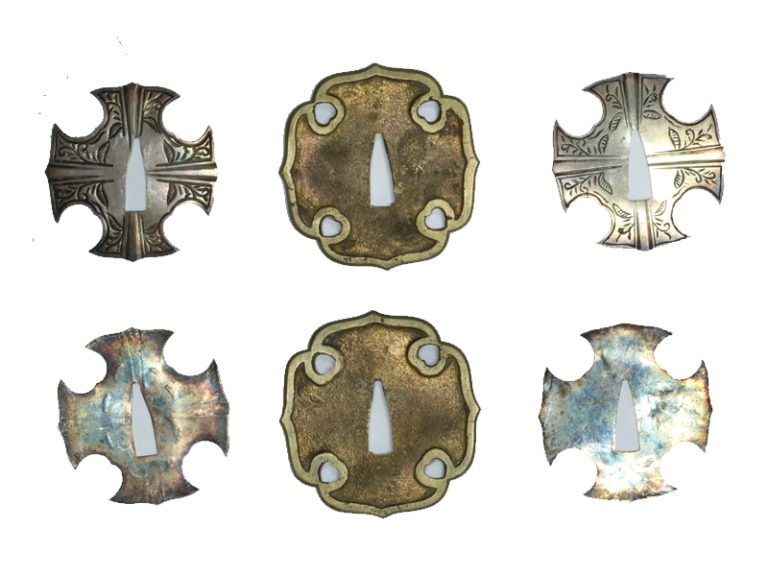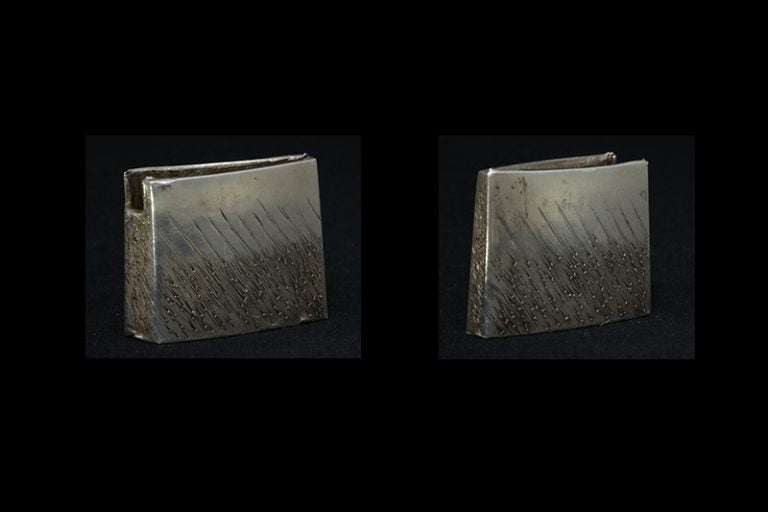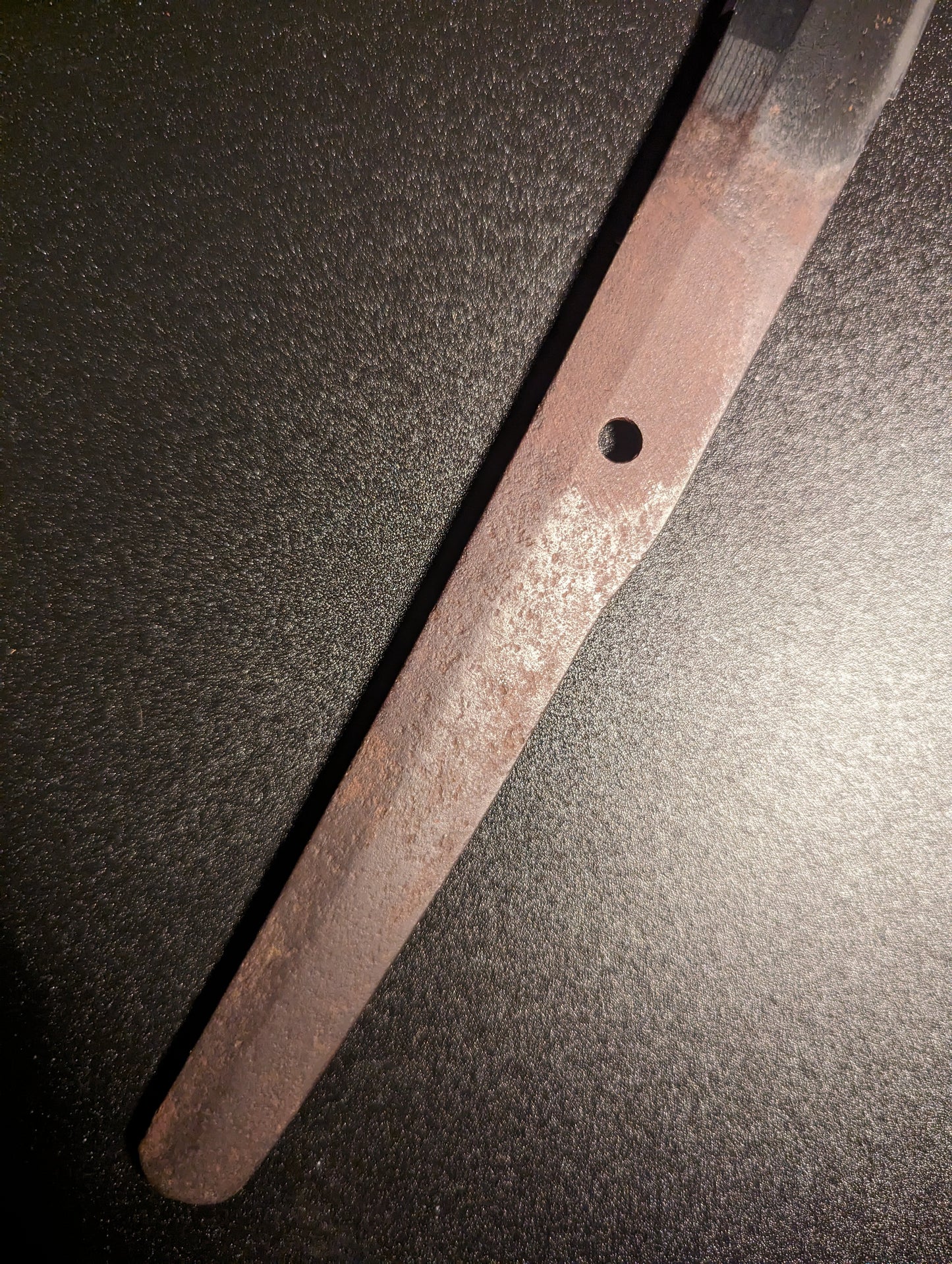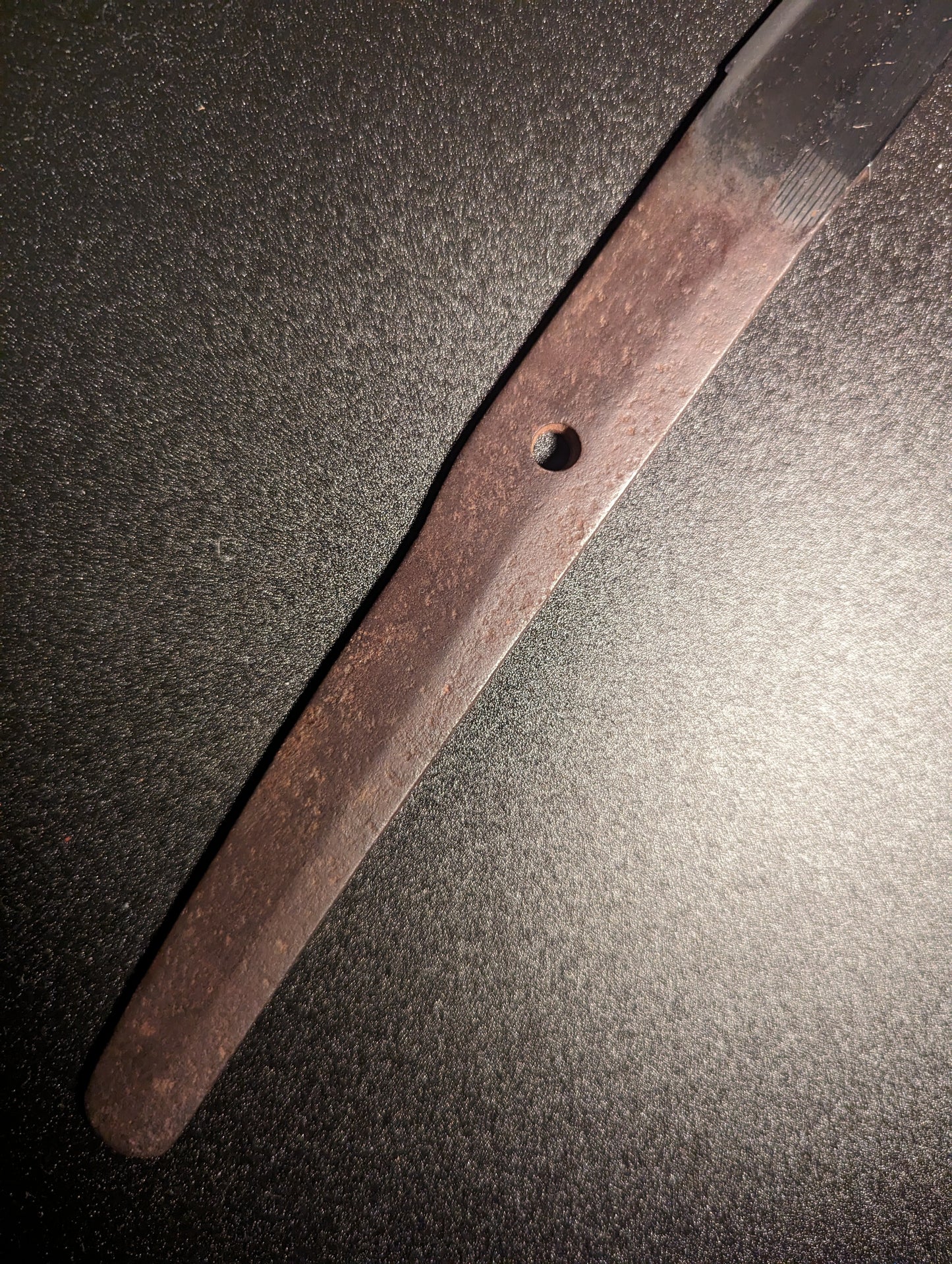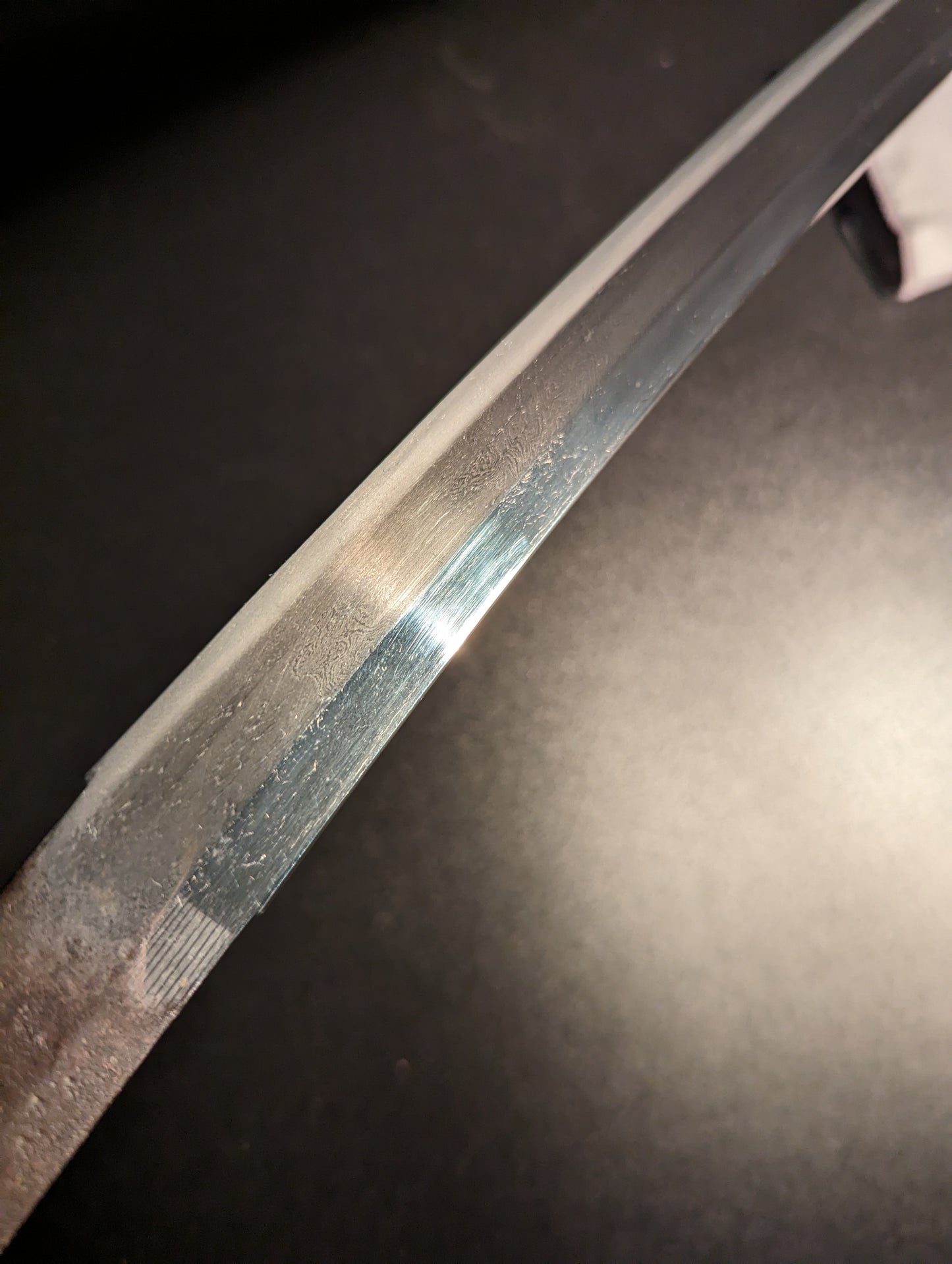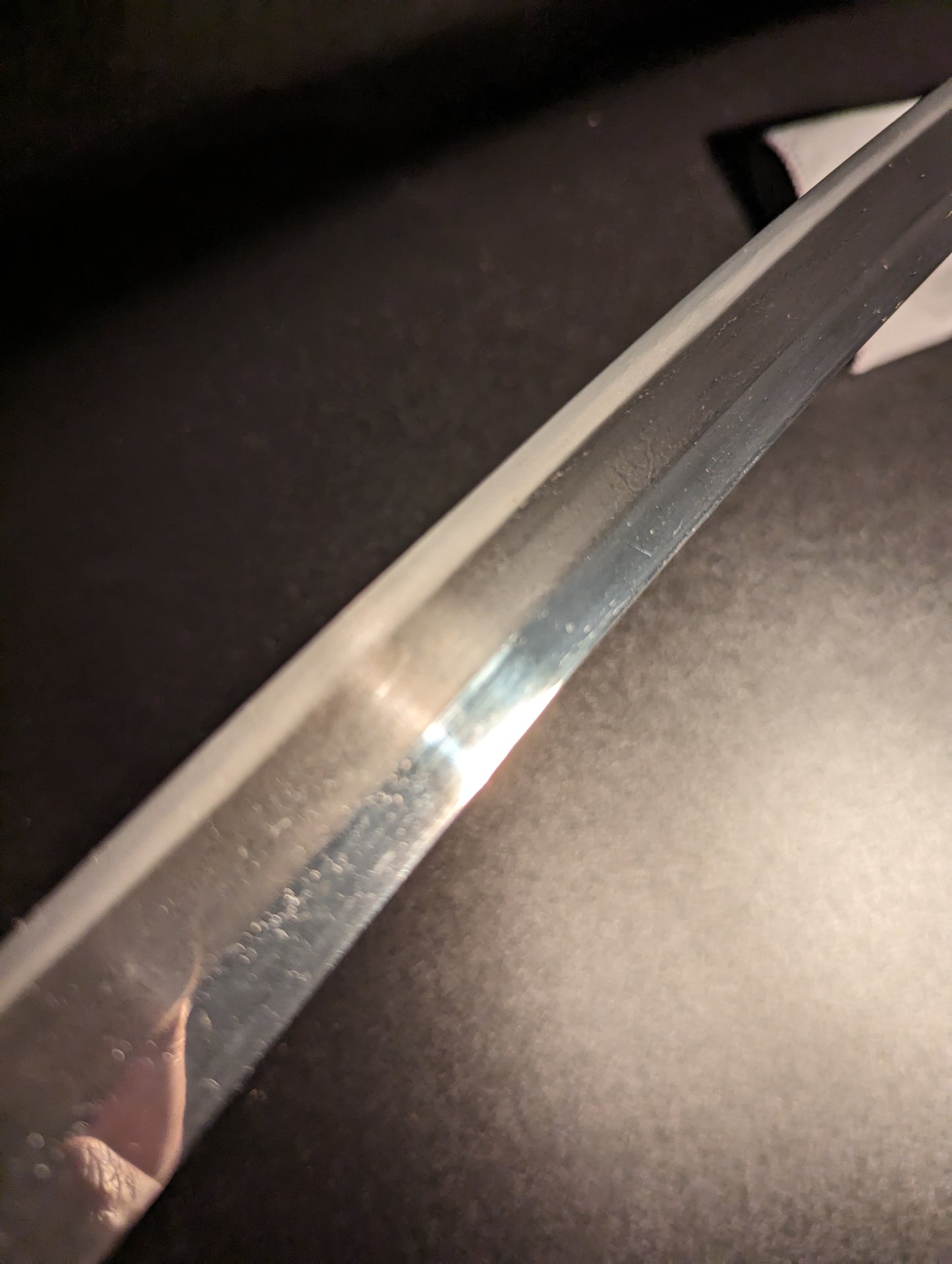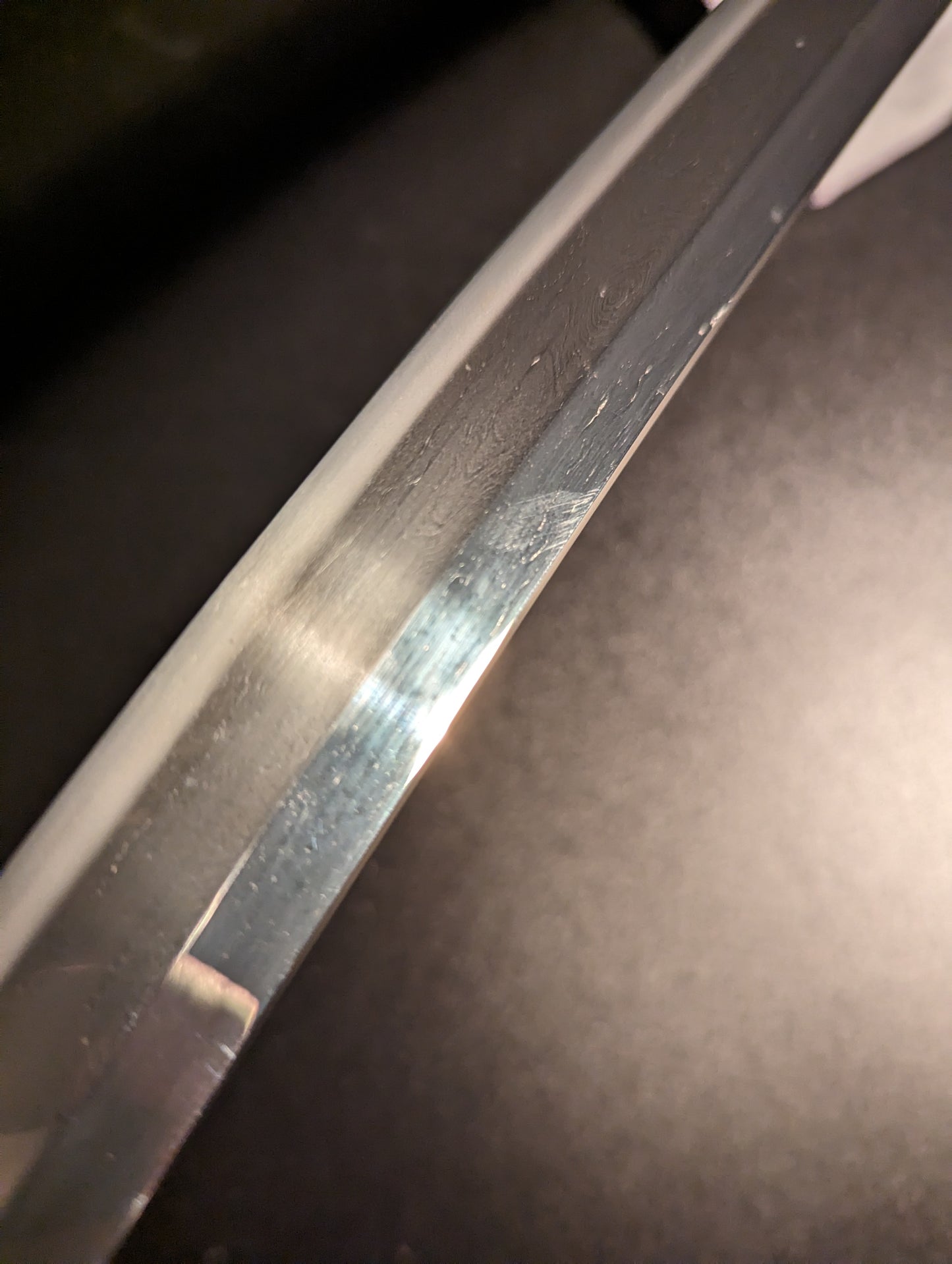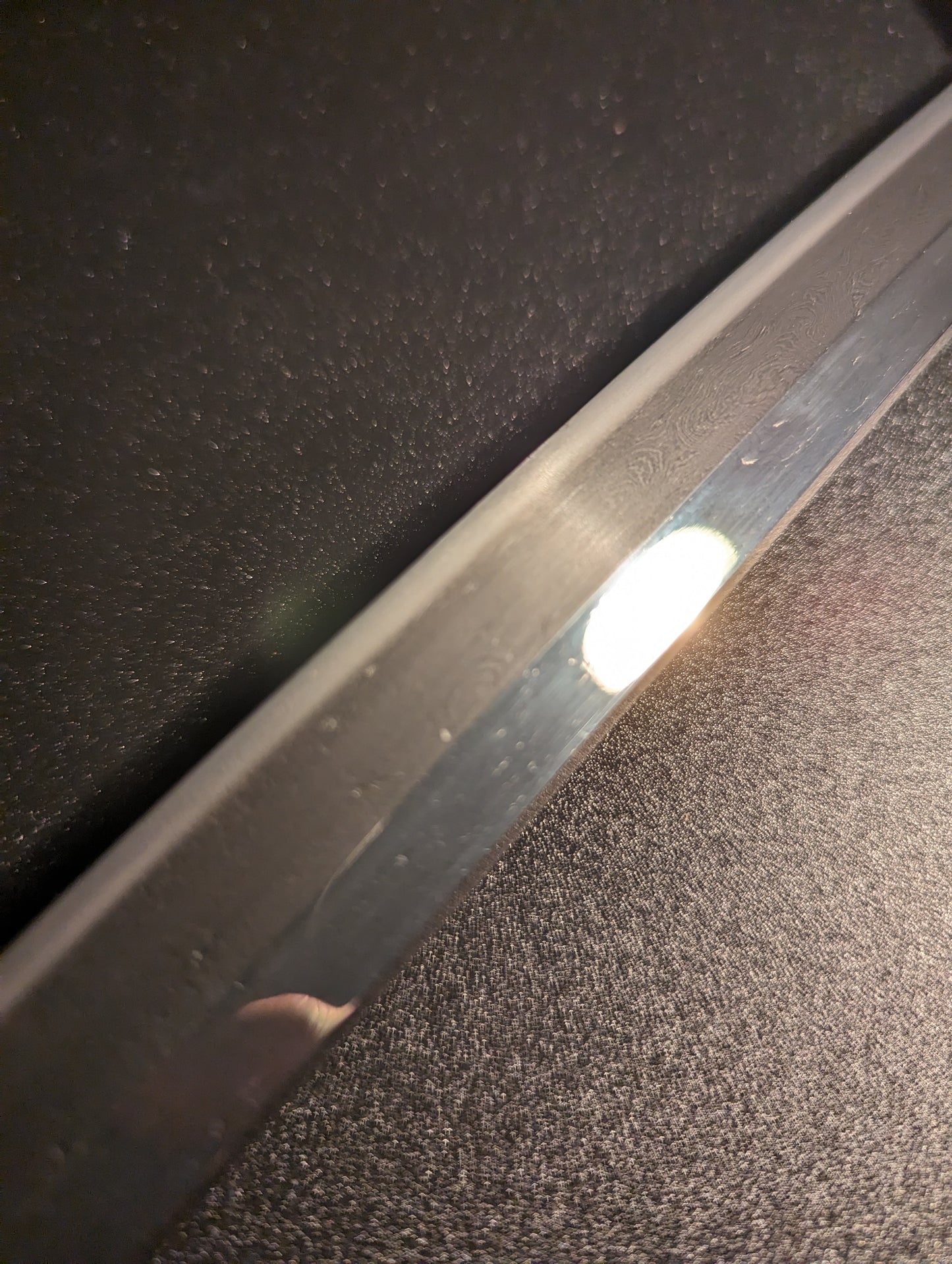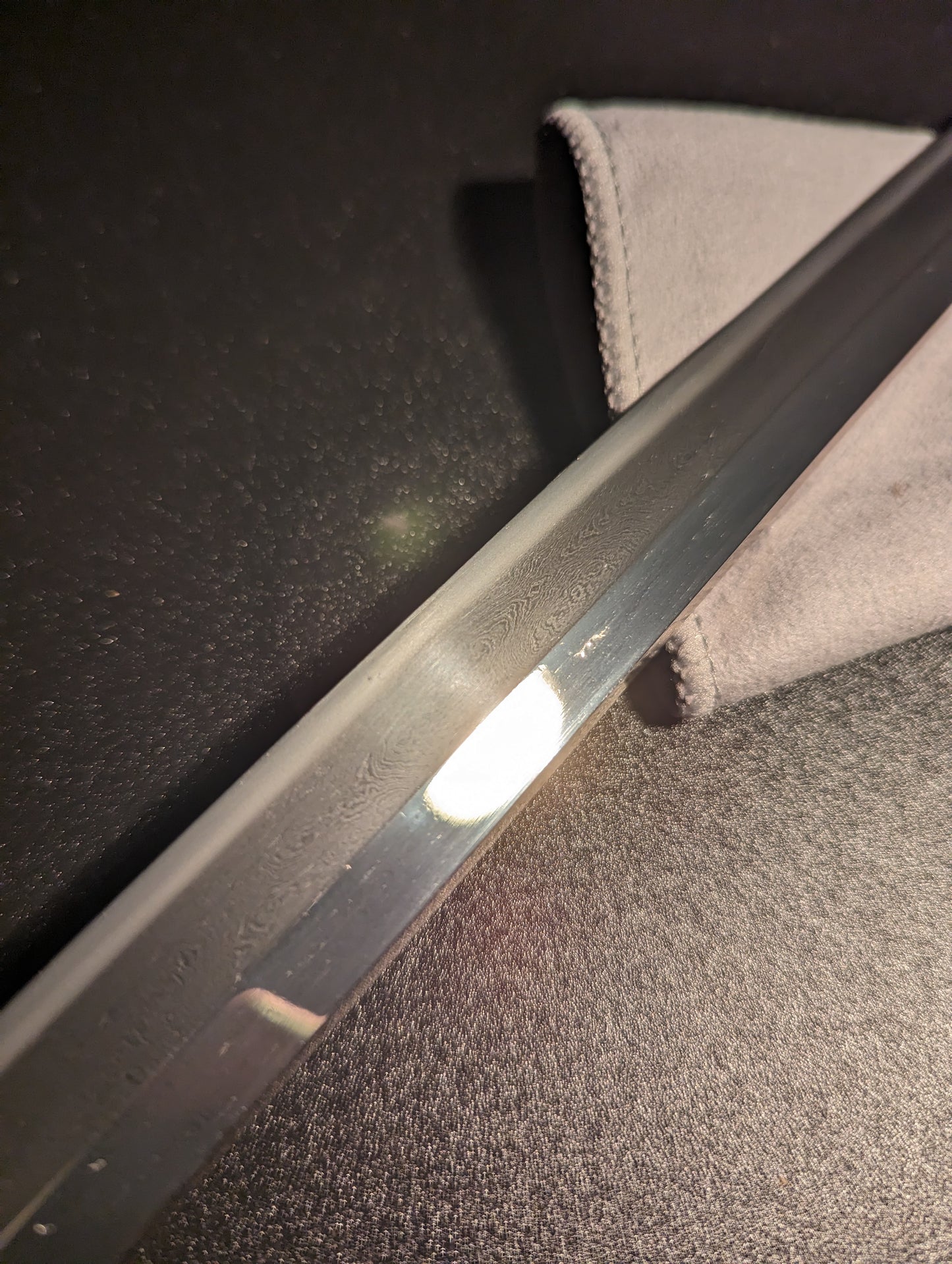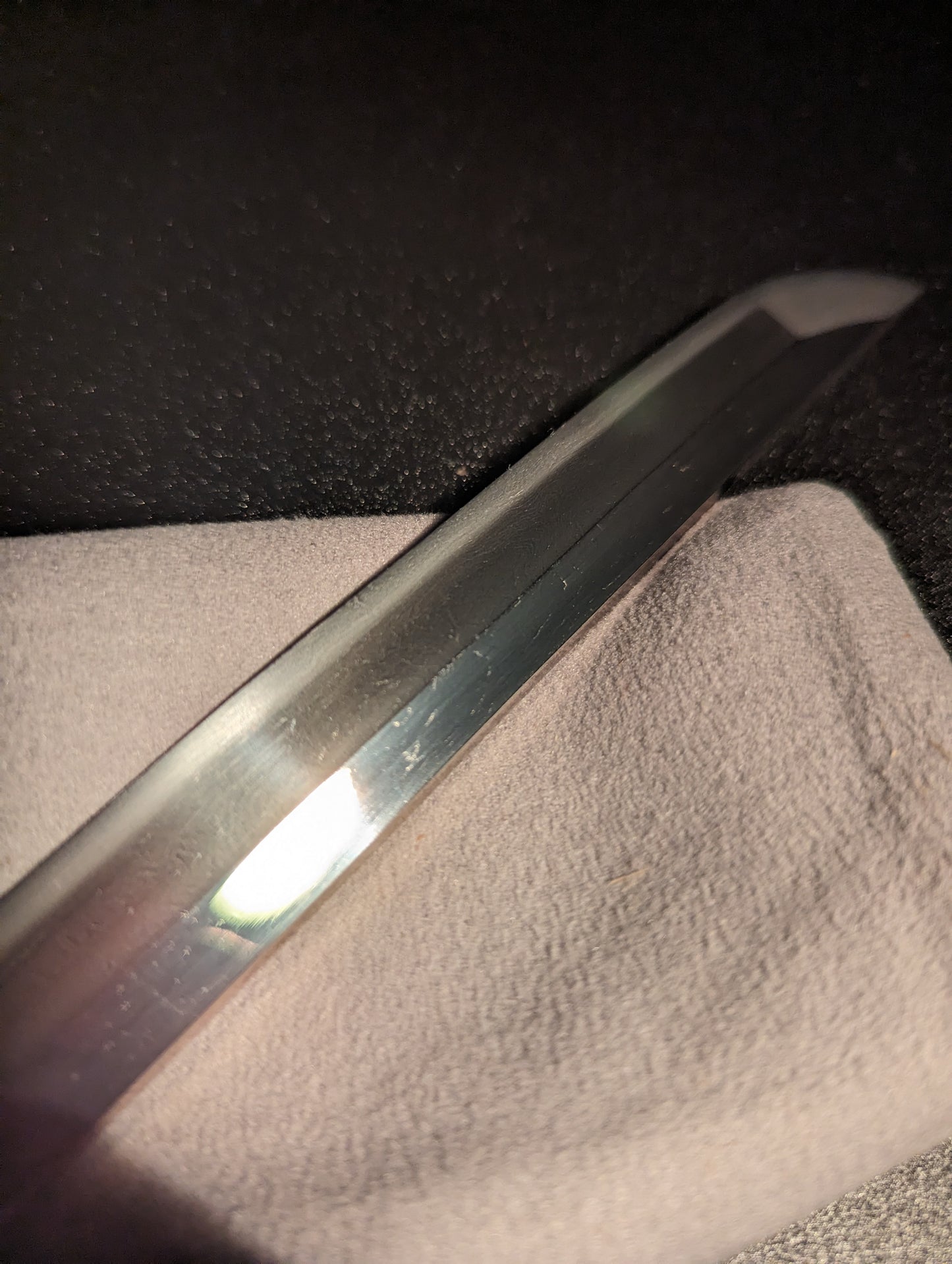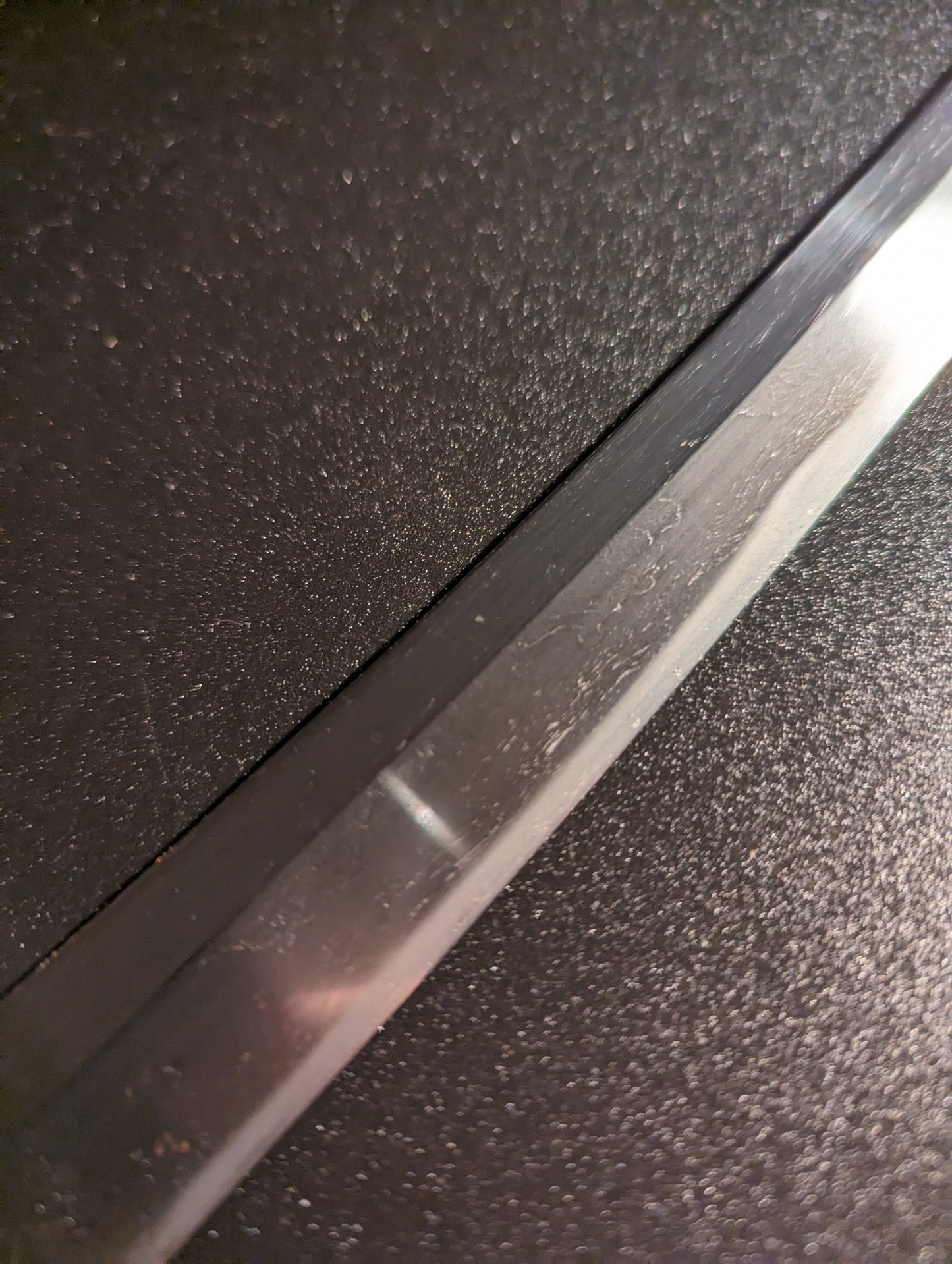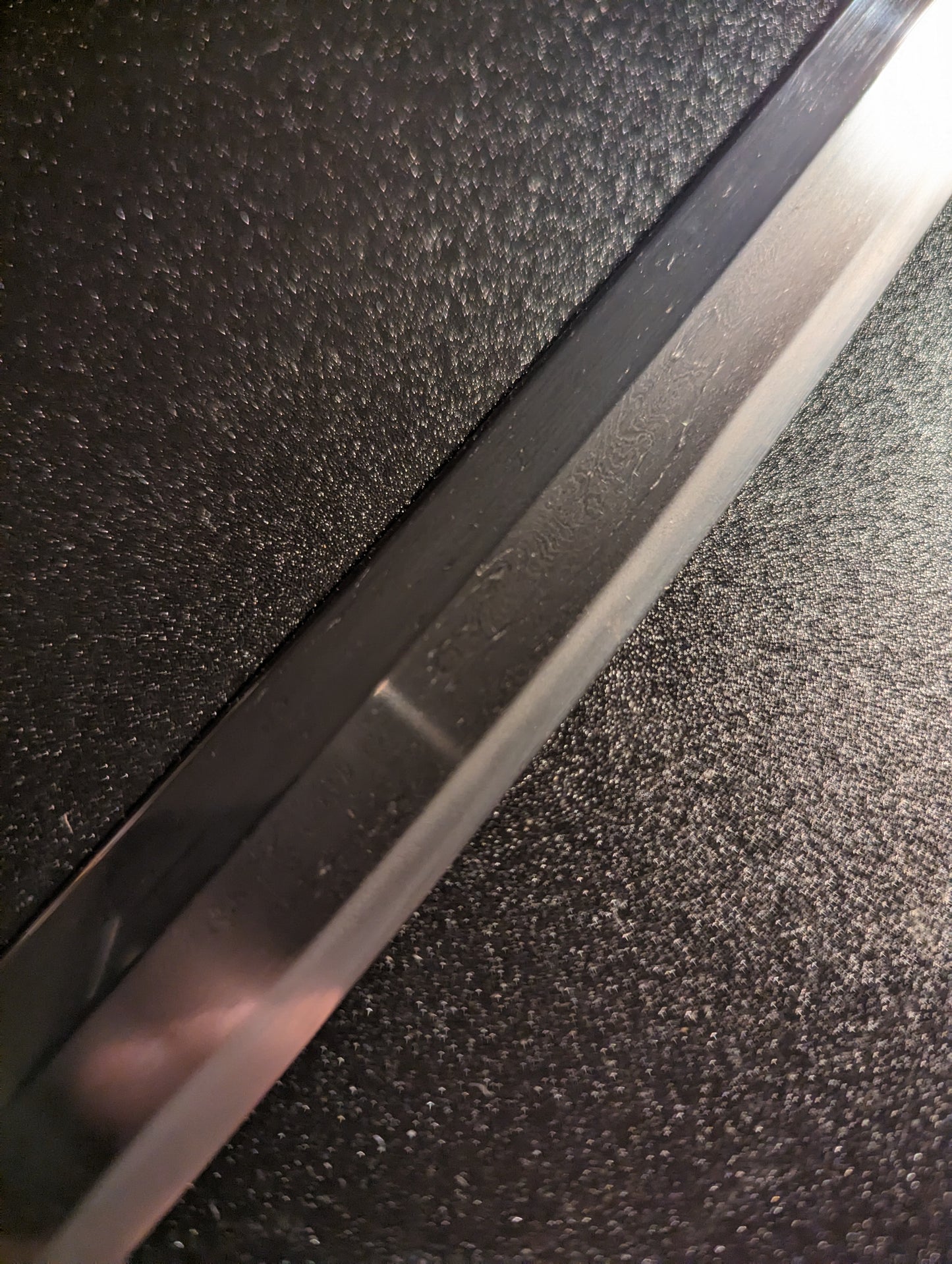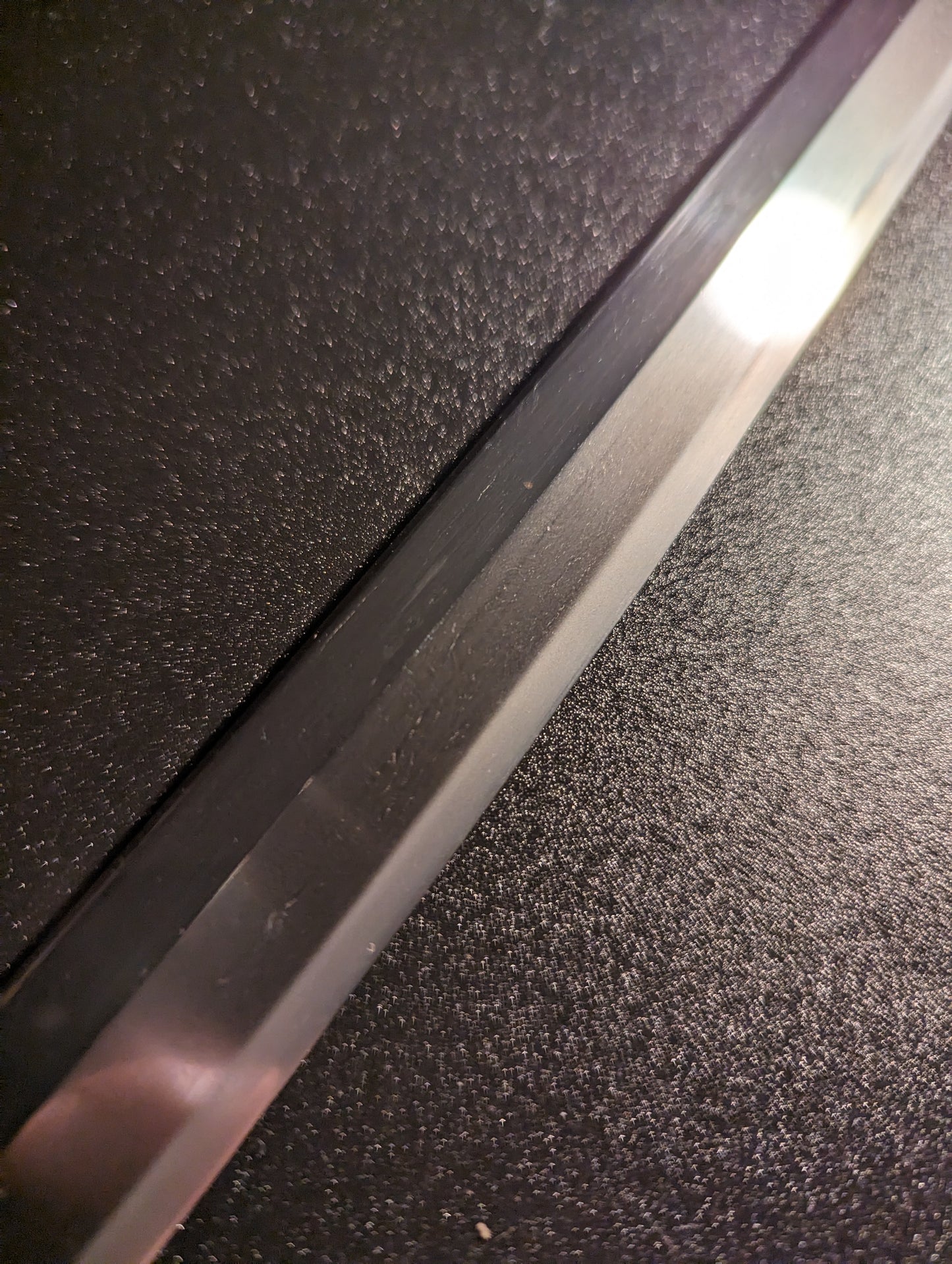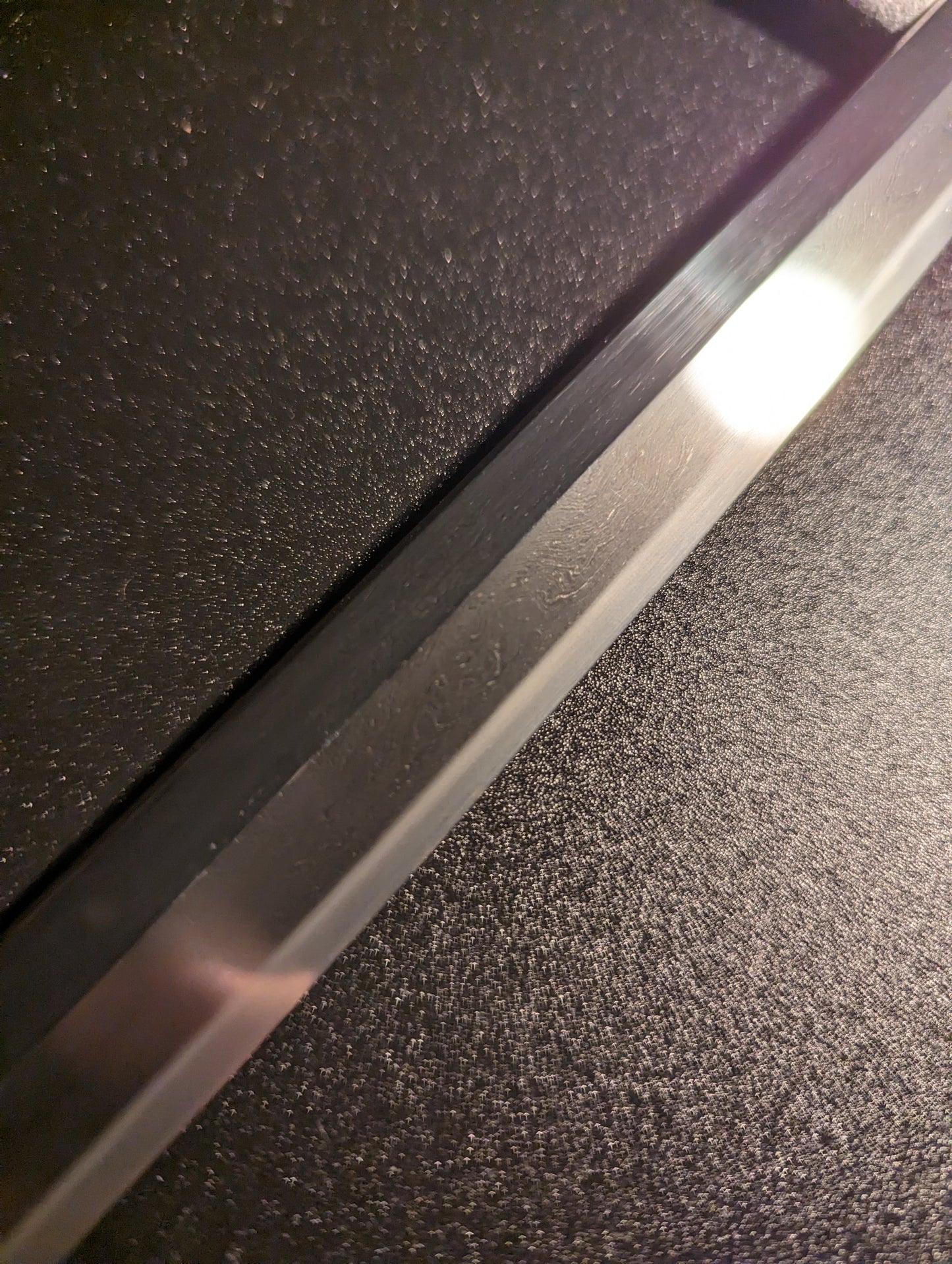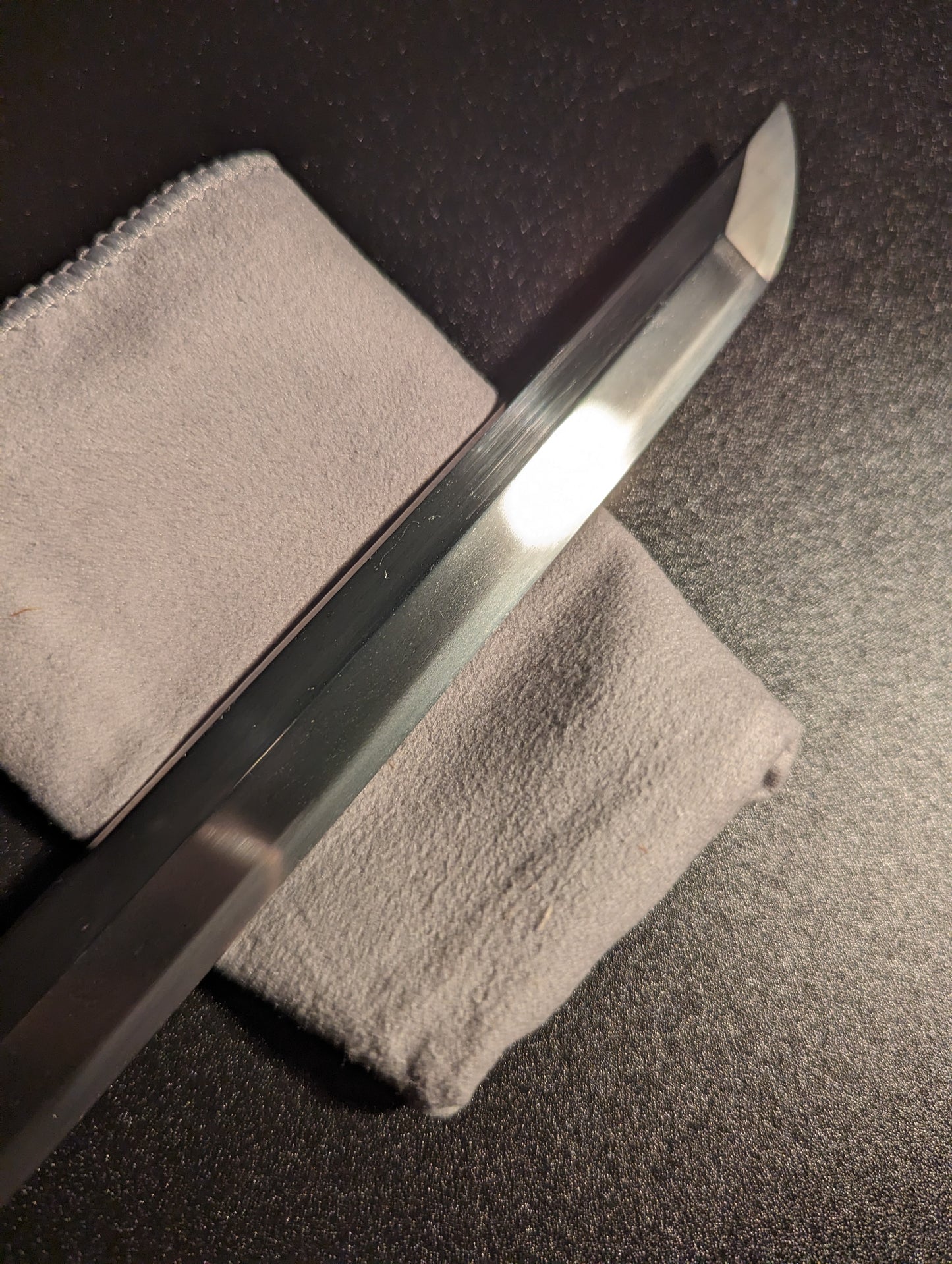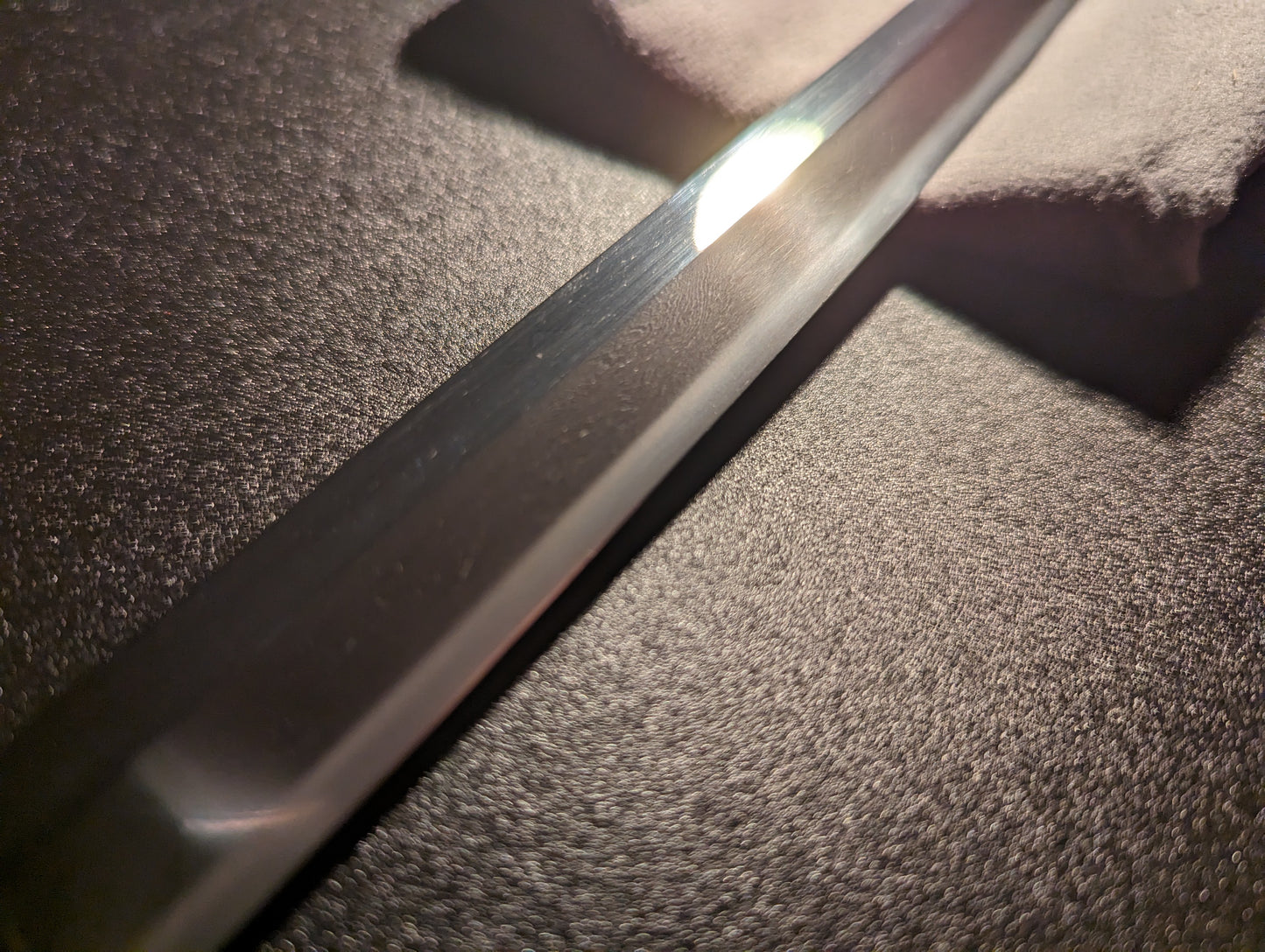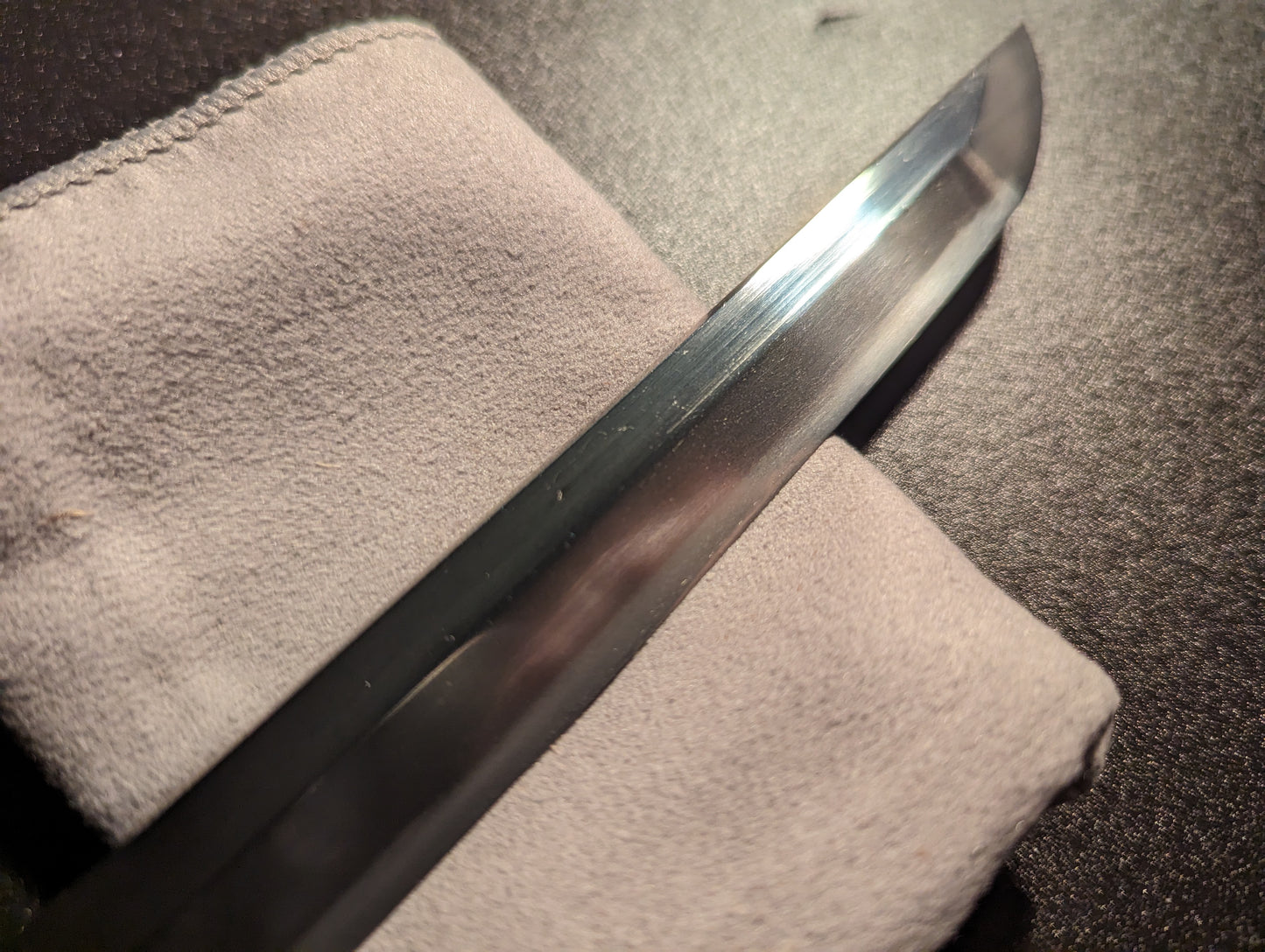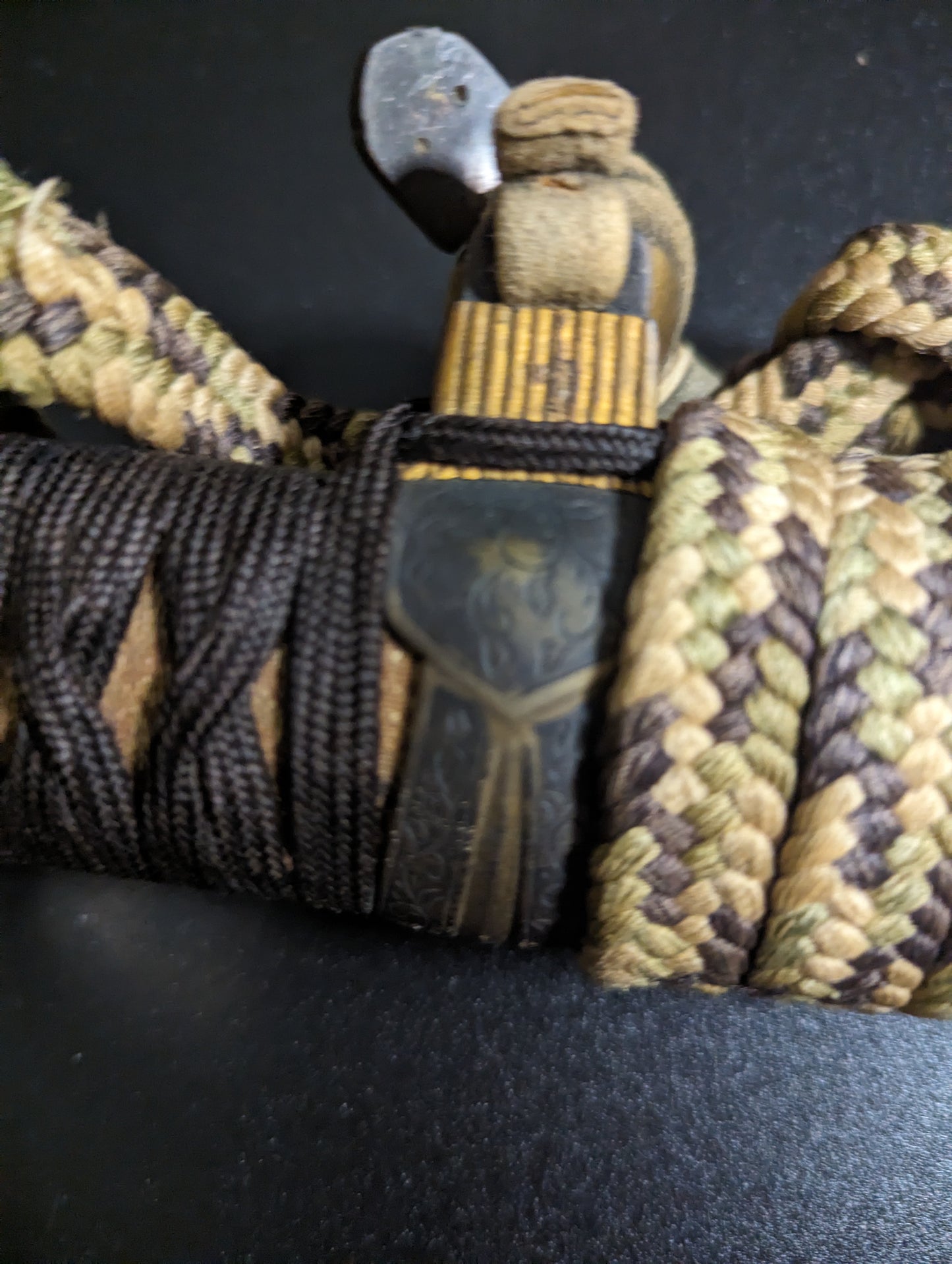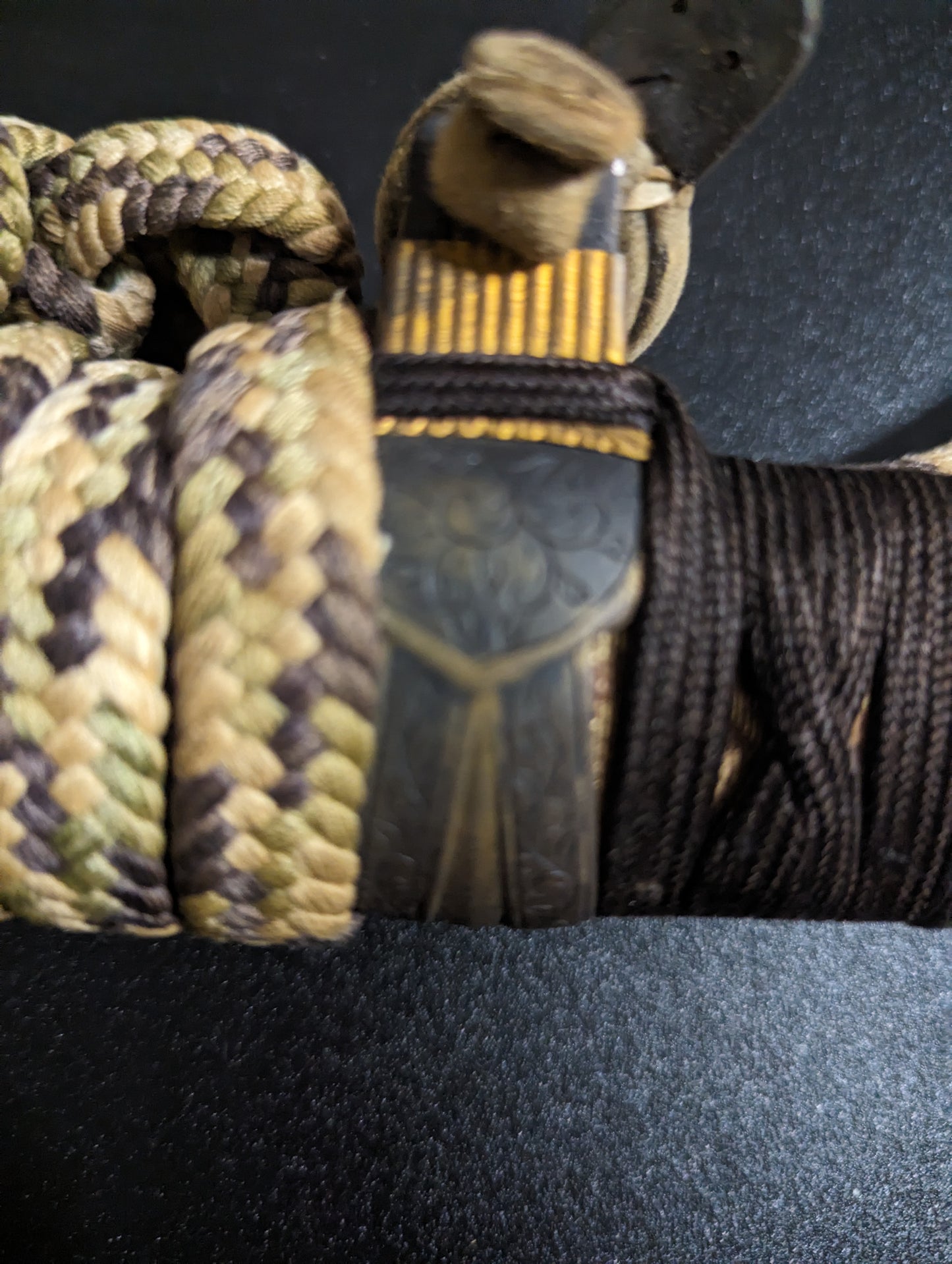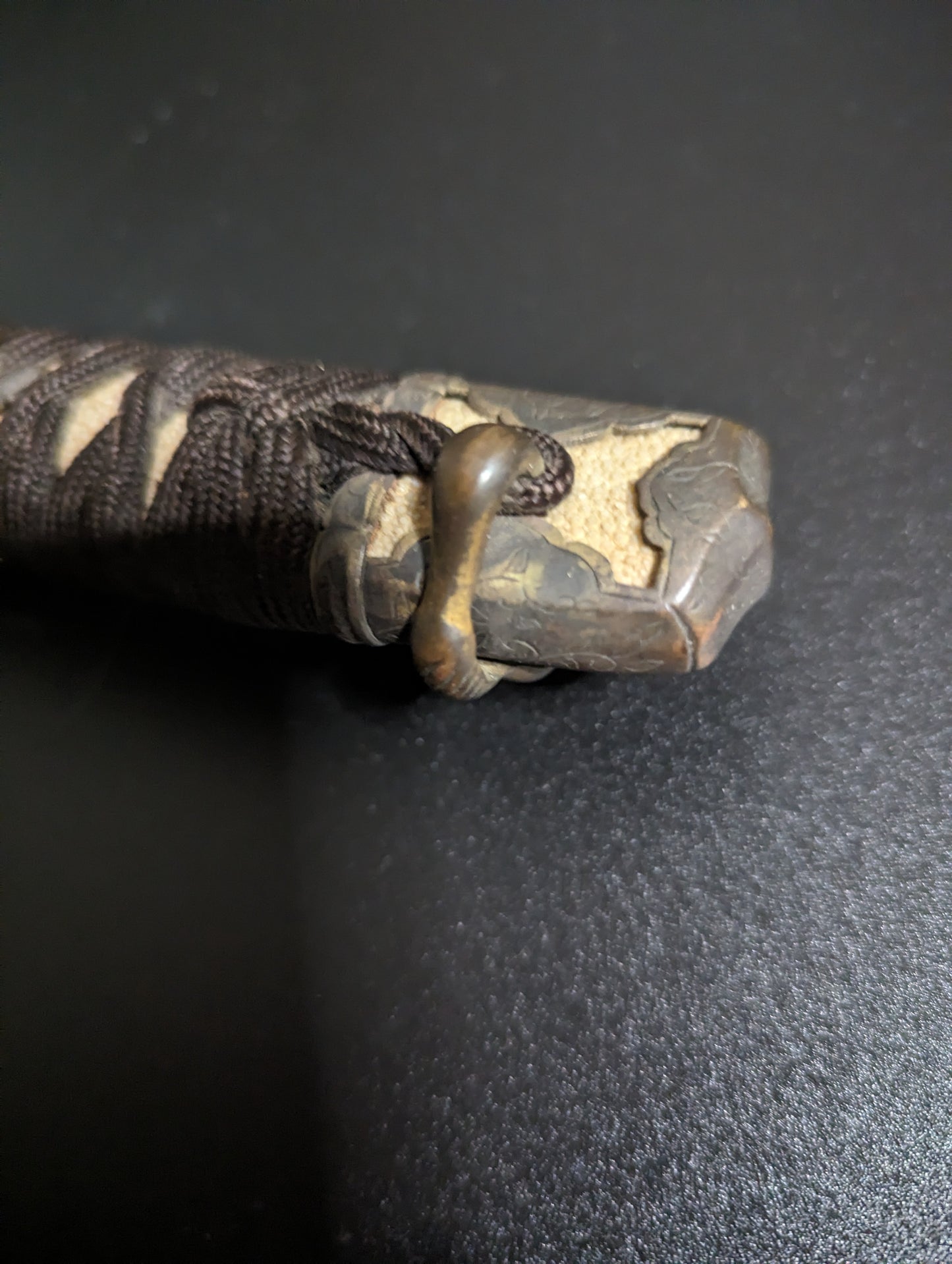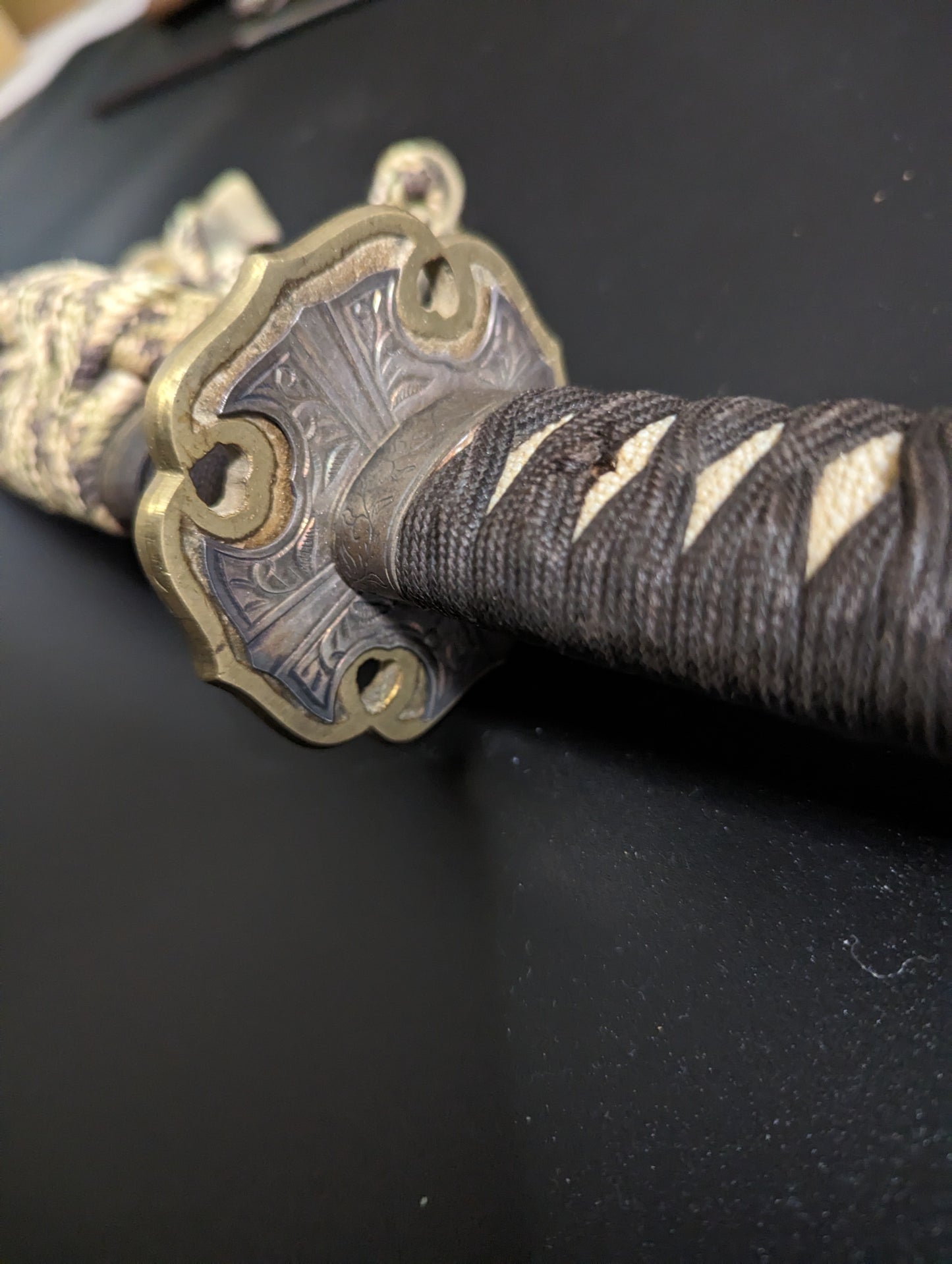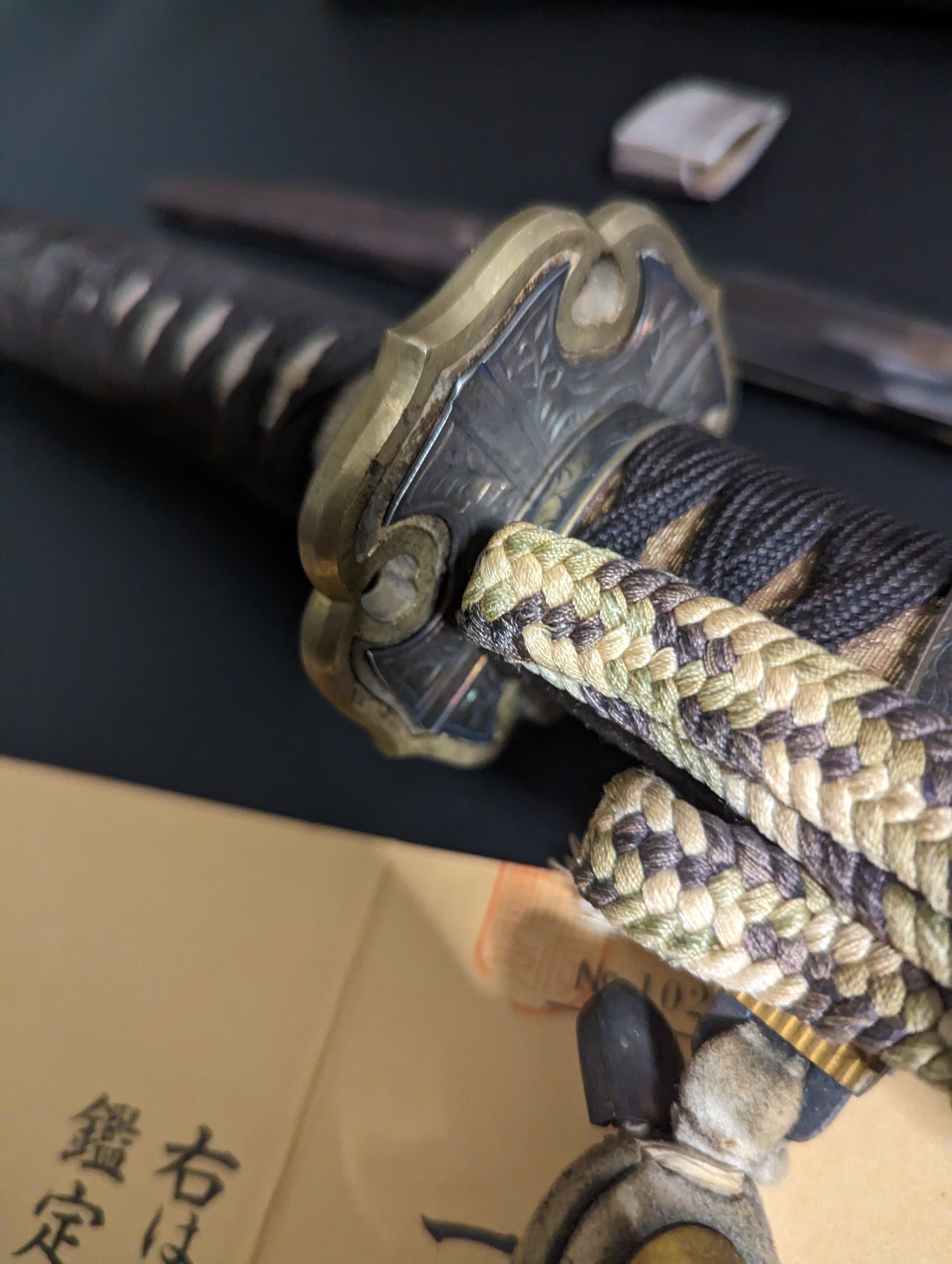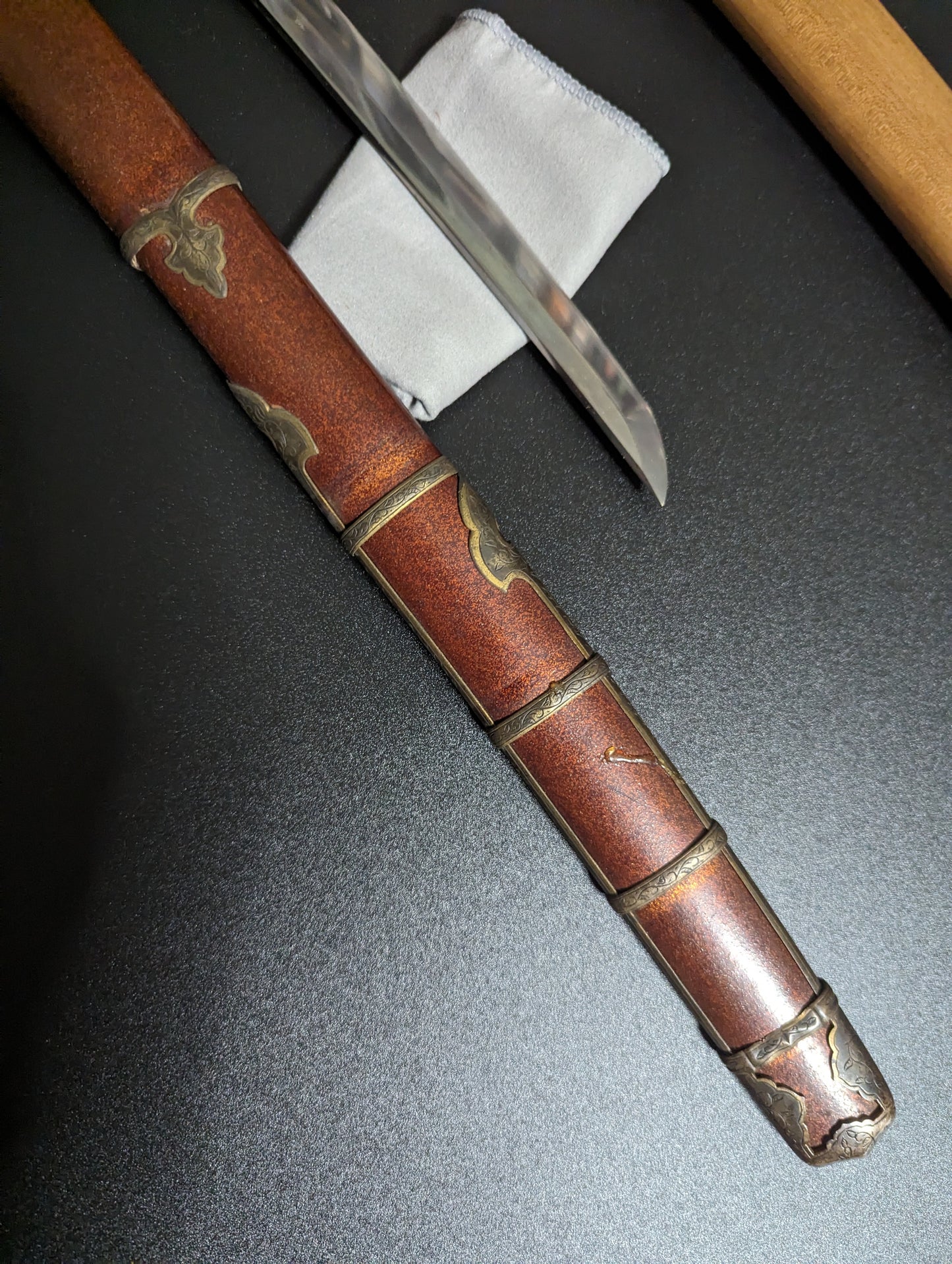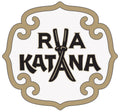Antique
Antique Nihonto - Katana in Shirasaya with Tachi Koshirae, Nanbokucho Period (650+ years old) - Unsigned, NBTHK Tokubetsu Hozon Attributed to Tegai Kanetoshi
Antique Nihonto - Katana in Shirasaya with Tachi Koshirae, Nanbokucho Period (650+ years old) - Unsigned, NBTHK Tokubetsu Hozon Attributed to Tegai Kanetoshi
This katana was forged during the Nanbokucho Period by Kanetoshi of the Tegai school. It is currently mounted with Edo-period tachi fittings, with a possibly Meiji-Era saya.
The blade features a Kijimomo "Pheasant Leg" nakago.
Tegai is one of the most prestigious schools, part of the Yamato (Nara-area) tradition. Its forges were located at the front gate of Todaiji temple, in front of the gate called Tegai Gate (輾磑門). The school name Tegai originally came from the sound of Tengai Gate.
There were five prestigious schools, including Tegai school, during the Kamakura-Nanbokucho period in Yamato province. They are called Yamato Goha(大和五派); Senjyuin(千手院), Shikkake (尻懸), Taima(当麻), Hosho(保昌) and Tegai(手掻) school. They served politically powerful monks and temples in Nara, such as Todaiji temples. They were initially forging swords for military monks who became powerful due to the government’s policy back then.
Monks needed many weapons as there were many political rivalries between influential temples. They required strong weapons like swords to protect themselves. During this time, Tegai school or other Yamato sword schools met the requests from monks. They also forged blades for Samurai during their heyday. It is often the case that those who belonged to Yamato Goha didn’t inscribe their signatures.
PP
SPECIFICATIONS
Nagasa: 65.7cm
Sori: 2.1cm
Motohaba: 2.8cm
Sakihaba: 1.6cm
Motokasane: 7.2cm
Sakikasane: 4.5cm
Blade Weight: 560g
SHIPPING, TERMS, AND REFUNDS
By placing an order with RVA Katana, the customer affirms they are a legal adult in their country of residence, and will comply with all local, state, and national laws regarding their order. Legacies of the East, Inc, DBA as RVA Katana shall be held blameless for any infraction of laws by the buyer.
US ORDERS
We make every attempt to ship within three business days by the customer’s preferred shipping method.
INTERNATIONAL ORDERS
Please note that the customer is responsible for understanding the import restrictions of their country, and that RVA Katana is not responsible for items seized in customs, or for swords that are not delivered for failure of the customer to pay customs, duties, or other carrier fees.
INCORRECT SHIPPING INFORMATION
If you accidentally enter an incorrect address, we are able to change it in our system free of charge before shipping. If you inform us after shipping, then we are not responsible for lost packages or return fees.
Release, Assumption of Risk, and Waiver of Liability and Indemnity Agreement:
Legacies of the East, Inc DBA RVA Katana does not warrant that a person or company may legally purchase, possess, or carry any and all items offered according to federal, state, or local laws. By purchasing any item Legacies of the East, Inc DBA RVA Katan, the buyer warrants that he is in compliance with all federal, local, and state laws and is legally able to purchase these items.
Returns
You may return any item unused within three days of receipt at your cost (we can provide a shipping label at reduced rates). After inspection of the returned item, we will refund you for the cost of said item, minus any shipping charges that we have covered.
After three days, a 20% restocking fee applies to any return.
Couldn't load pickup availability
Share

